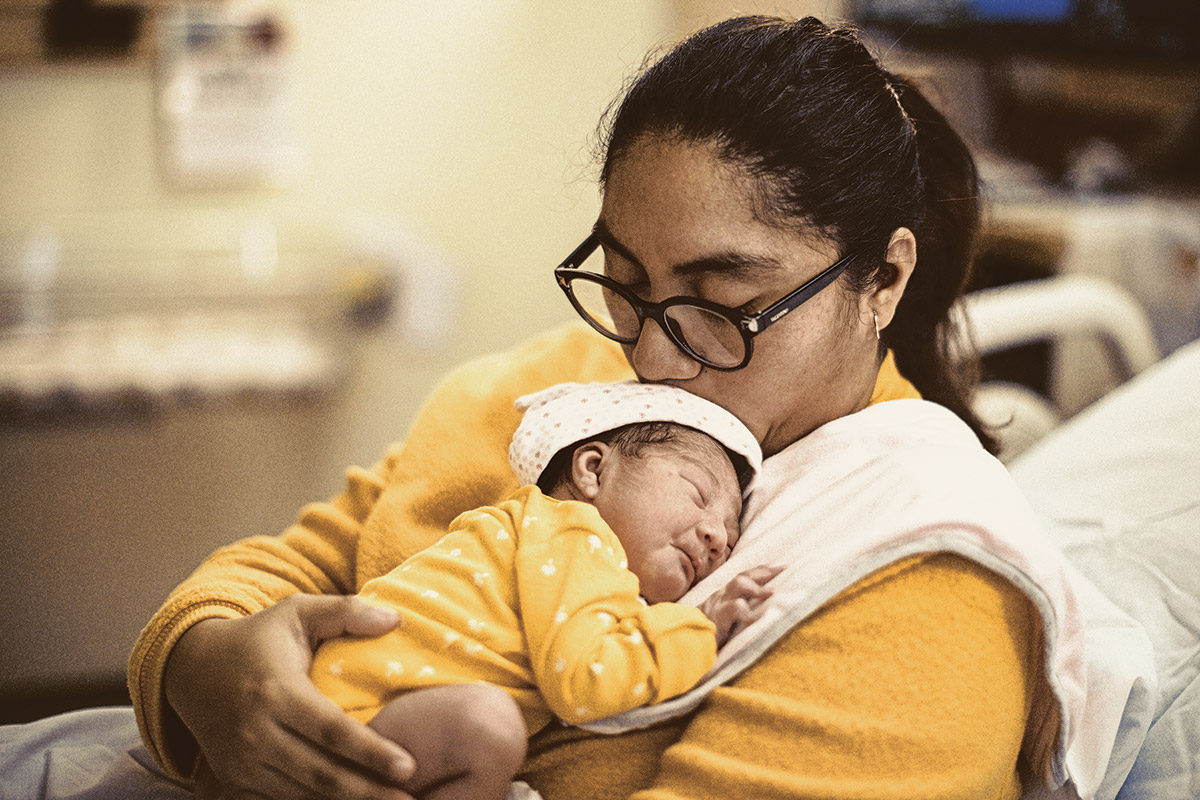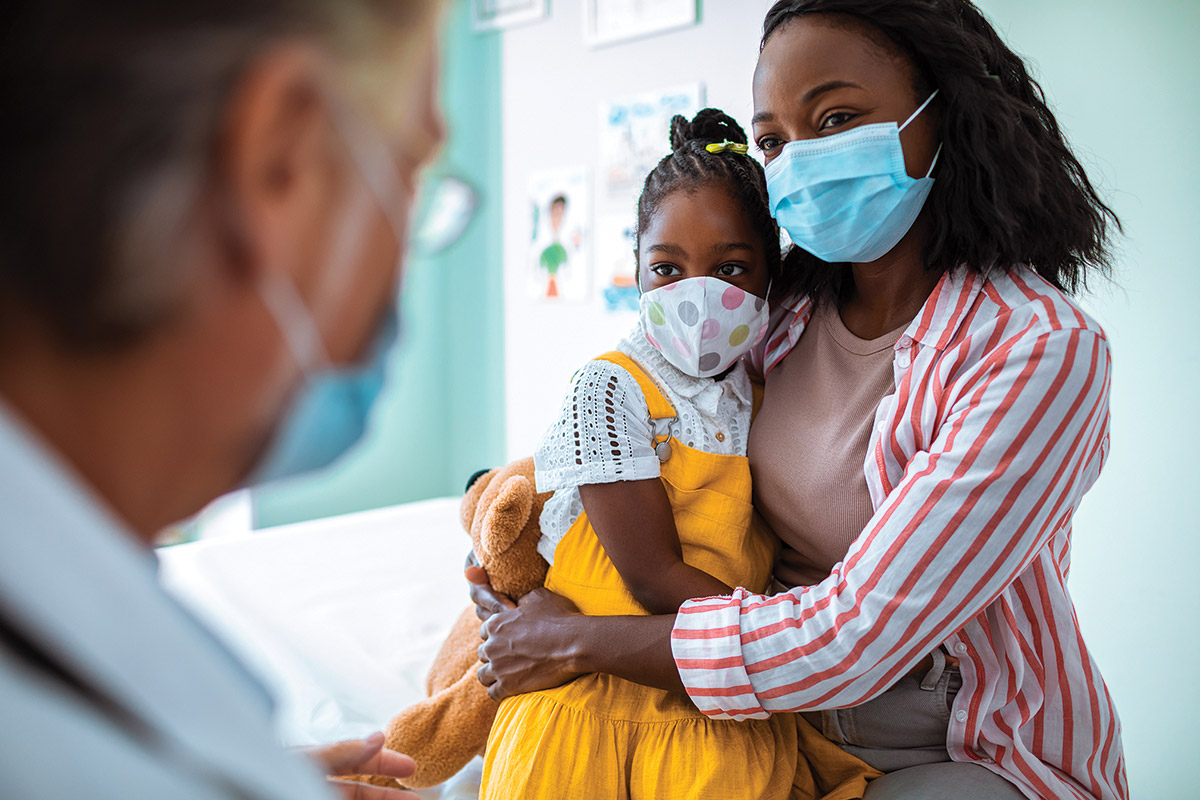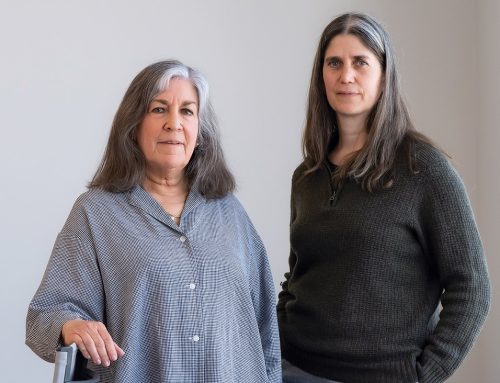

Study calls into question the “Hispanic paradox” for birth outcomes in New York City
In the United States, African American or non-Hispanic Black infants have historically experienced worse birth outcomes than Hispanic infants, whose outcomes are more comparable to those of non-Hispanic white infants despite mothers’ lower educational attainment and income as well as reduced access to health care. This phenomenon is referred to as the “Hispanic paradox.”
A new study led by CUNY SPH Distinguished Professor Luisa N. Borrell with affiliated faculty member Francisco Bolúmar, doctoral student Christina Nieves and University of the Basque Country Professor Elena Rodriguez-Alvarez suggests that the Hispanic paradox does not apply to all Hispanic people and calls attention to the need for data disaggregation for the Hispanic population when it comes to birth outcomes whenever possible to better understand and address health inequities.
When disaggregating New York City Hispanic women by country or region of origin, infants of Mexican American, Central American, and South American women were less likely to have low birth weight infants whereas the opposite was true for infants of Cuban women when compared with infants of white women. When compared with white women, Mexican American and South American women were less likely to have an infant that was small for their gestational age whereas Puerto Rican women were more likely to have a small for gestational age infant. All Hispanic women were more likely to have a preterm birth baby than white women whereas for infant mortality, greater odds of dying were observed for infants of Puerto Rican and Dominican women.
“We found that the Hispanic paradox does not apply to all Hispanic women when subgroups’ outcomes were examined in NYC,” says Dr. Borrell. “In addition, our findings suggest that the racial and ethnic composition of the neighborhoods in which women live and interact may be important for birth outcomes, underscoring the importance of downstream and upstream determinates of health and their interactions to promote or affect health outcomes.”
Borrell LN, Bolúmar F, Rodriguez-Alvarez E, Nieves CI. Adverse birth outcomes in New York City women: Revisiting the Hispanic Paradox. Soc Sci Med. 2022 Dec;315:115527. doi: 10.1016/j.socscimed.2022.115527. Epub 2022 Nov 11. PMID: 36442315.

Legalization of recreational cannabis may be linked with asthma prevalence among children and adolescents
A study led by CUNY SPH Professor Renee Goodwin suggests a link between the legalization of cannabis for recreational use and the prevalence of asthma among children and adolescents.
To investigate the relationship between cannabis legalization for medical and/or recreational use and the state-level prevalence of asthma among children in the U.S., Goodwin, along with Associate Professor Katarzyna Wyka and colleagues, used data from the 2011-2019 National Survey on Children’s Health, a representative sample of the population of minor children in the U.S.
The researchers found that childhood asthma increased among teens ages 12-17 by 2019 in states where recreational cannabis is legal when compared to states where it remains illegal. An increase was also observed among youth from some minoritized ethnic and racial minority groups by 2019, relative to 2011 in states with recreational legalization relative to those where cannabis use is not legal. In states where recreational cannabis is not legal, there was a decline in childhood asthma. Overall, declines in the prevalence of childhood asthma were less pronounced in states where cannabis use has been legalized for recreational use, relative to those where it remains fully illegal, from 2011 to 2019.
“More research is needed to understand the potential impact of increased adult use of cannabis on children’s respiratory health,” says Goodwin. “In the meantime, providing information and education in clinical and public health settings, analogous to that which is now standard practice with tobacco use among adults and parents, especially those with children with asthma, would likely be useful to folks. This is not common knowledge, and cannabis smoke is often perceived as ‘less harmful’ than secondhand cigarette smoke.”
R.D. Goodwin, K. Wyka, M. Luo, et al., Cannabis legalization and childhood asthma in the United States: An ecologic analysis, Preventive Medicine (2022)

Early in U.S. pandemic, household crowding was risk factor for severe COVID-19 infection
Towards the beginning of the COVID-19 pandemic in the U.S., stay-at-home measures helped stop the spread of the virus. At the same time, it may have shifted transmission to homes where, in many cases, entire families were suddenly spending more time together in close quarters.
To investigate household crowding as a risk factor for severe COVID-19 disease, a team of researchers from the CUNY Institute for Implementation Science in Population Health (ISPH) conducted a study using interview data from 6,831 U.S. adults screened for the Communities, Households and SARS/CoV-2 Epidemiology (CHASING) COVID Cohort Study in April 2020.
The researchers found that household crowding not only increased the risk of infection, but also increased the risk of severe COVID-19 disease, requiring hospitalization. Having children in the home was also a risk factor for being hospitalized with the virus.
“Since community prevalence is often at its peak at the time stay-at-home measures are put in place, continued transmission in many households after lockdown is highly likely,” says lead author Distinguished Professor Denis Nash. “Moreover, there were no vaccines to protect people against severe disease when this study was conducted, making it most relevant for future pandemics. The findings suggest that mask wearing and other safety measures should be implemented in homes following stay-at-home orders in future pandemics to limit household transmission and severe disease.”
Nash D, Qasmieh S, Robertson M, Rane M, Zimba R, Kulkarni SG, et al. (2022) Household factors and the risk of severe COVID-like illness early in the U.S. pandemic. PLoS ONE 17(7): e0271786.

Testing the role of meat consumption in cardiovascular disease
In February 1977, in the midst of a heart disease epidemic, a U.S. senate select committee encouraged people to eat less meat. Within the year, however, possibly due to pressure from the meat industry, the committee shifted its advice, placing more emphasis on reducing saturated fat.
Over the last 45 years, researchers have accumulated high-quality evidence suggesting that saturated fat has no effect on cardiovascular or overall mortality.
To further investigate the role of meat consumption in ischemic heart disease, CUNY SPH Professor Mary Schooling and colleagues led a study published in BMC Medicine testing L-carnitine, a biomarker of meat intake, using a study design similar to a randomized controlled trial, taking advantage of genetic randomization.
The study found L-carnitine to be positively associated with ischemic heart disease, particularly in men. These findings help explain the higher rates of heart disease in men, as well as substantiating the original dietary advice to decrease consumption of meat. Given the ecological footprint of meat consumption, Schooling says, following this advice could also reduce dietary environmental impacts.
“Reducing meat consumption could be a means of improving planetary and men’s health,” Schooling says. “Identifying the sex-specific underlying drivers/consequences of L-carnitine could inform identification of further interventions.”
Zhao JV, Burgess S, Fan B, Schooling CM. L-carnitine, a friend or foe for cardiovascular disease? A Mendelian randomization study. BMC Med. 2022 Sep 1;20(1):272. doi: 10.1186/s12916-022-02477-z. PMID: 36045366; PMCID: PMC9434903.

Gauging the successes, failures, and needs of physician abortion advocacy
For decades, physicians have advocated for and provided access to abortion in the United States, both prior to and after the Roe v. Wade decision in 1973. Since Roe v. Wade was overturned in June 2022, the need for knowledgeable and effectively trained advocates is more critical than ever.
In a study in Health Promotion Practice, Associate Professor Meredith Manze, doctoral alum Amy Kwan, Assistant Professor Lynn Roberts, Associate Professor Heidi Jones and Professor Diana Romero sought the perspectives of select stakeholders by way of key informant interviews.
The researchers interviewed 15 sexual and reproductive health providers with expertise in organizational policy and advocacy, clinical leadership and education, media and reproductive justice. Key informants relayed that skill building related to communication, developing relationships with change-makers, and understanding political systems was critical for effective advocacy. They felt clinician advocacy training programs should include providers other than physicians and be designed for trainees to build relationships with one another over time.
“As abortion rights are increasingly restricted in the United States, designing effective advocacy programs is essential to ensuring abortion access,” says Manze. “The perspectives of these key informants can help inform advocacy training program curricula and offer strategic approaches to increasing equitable and widespread access to sexual and reproductive health services.”
Manze M, Kwan A, Jones H, Roberts L, Romero D. Sexual and Reproductive Health Advocacy Successes, Failures, and Needs in the United States: Perspectives From Key Stakeholders. Health Promotion Practice. 2022;0(0). doi:10.1177/15248399221137053

Study shows many U.S. children missed routine pediatric visits during pandemic
The COVID-19 pandemic and early efforts to stop the spread led many in the U.S. to delay non-emergency and elective medical care. Evidence suggests that missed care during the pandemic may have contributed to increased mortality in adults from causes other than COVID-19, but there is little research on the prevalence of missed routine pediatric visits among U.S. children.
To investigate, Assistant Professor Chloe Teasdale and colleagues from the CUNY Institute for Implementation Science in Population Health (ISPH) led a study published this month in Preventive Medicine.
In March 2021, the researchers conducted a cross-sectional online survey of 2,074 U.S. parents of children 12 years and younger to measure the proportion of children who missed pediatric care and vaccinations over the first 12 months of the COVID-19 pandemic. Overall, 41.3% of parents reported that their youngest child missed a routine medical visit due to the COVID-19 pandemic. Missed care was more common among children older than two years and among Hispanic children. A third of parents also reported their child had missed a vaccination.
“Delayed or missed pediatric care, including missed vaccinations, could have significant long-term impact on the health of children, their families and communities,” says Teasdale. “Catch-up efforts are needed to ensure continuity of preventive care for all children.”
Teasdale CA, Borrell LN, Shen Y, Kimball S, Zimba R, Kulkarni S, Rane M, Rinke ML, Fleary SA, Nash D. Missed routine pediatric care and vaccinations in US children during the first year of the COVID-19 pandemic. Prev Med. 2022 May;158:107025. doi: 10.1016/j.ypmed.2022.107025. Epub 2022 Mar 19. PMID: 35318030; PMCID: PMC8933962.

Social vulnerabilities—not individual behavior—put opioid-using women at risk for rape
In a study published in Violence Against Women, a team of researchers from the CUNY SPH Institute for Implementation Science in Population Health (ISPH) sought to understand why young women who use prescription opioids nonmedically and/or heroin are at heightened risk of rape.
Affiliated Researcher Lauren Jessell, Associate Professor Pedro Mateu-Gelabert, Research Associate Professor Honoria Guarino and Data Analyst Chunki Fong used data from 168 female participants of a NIDA-funded study which examined the drug and sexual risk behaviors of 539 young adult opioid users in New York City. Structured interviews included questions about socio-demographics, drug use, and sexual experiences.
The responses revealed a shockingly high prevalence and frequency of sexual violence, including rape, among women who use opioids. One-third of the sample had been raped at least once while using drugs. Social vulnerabilities such as low household income, having experienced homelessness or living with a mental illness increased women’s risk of being targeted for sexual violence.
The findings suggest it is not drug use itself that puts women at risk, but the sexually coercive context in which drugs are used and the multiple social vulnerabilities that women who use opioids experience. Participants described situations where they were often insulted, propositioned for sex, or otherwise felt they were expected to have sex after drugs were shared with them.
“It is our hope that these findings will help in the development of more useful prevention efforts,” says Jessell. “These efforts should target risky contexts and patriarchal norms rather than the behavior of individual women.”
Jessell, L., Mateu-Gelabert, P., Guarino, H., & Fong, C. (2022). Why Young Women Who Use Opioids Are at Risk for Rape: The Impact of Social Vulnerabilities and Sexually Coercive Drug Using Contexts. Violence Against Women, 0(0).

A better way to gauge the health risks of firefighters
A new study by CUNY SPH researchers presents an improved system for evaluating associations between firefighting and adverse health outcomes.
Firefighters are at great risk for disease due to occupational exposure to combustion byproducts, but it is difficult to monitor these exposures due to safety concerns, randomness and variability of each fire incident.
To estimate quantities of smoke particles emitted during fire incidents, CUNY SPH doctoral alum David Goldfarb, Professor Ilias Kavouras and colleagues developed a refined job exposure matrix based on incident types, severities and response characteristics and applied it to a cohort of New York City firefighters.
The matrix is an improvement on prior methods which estimate exposure crudely, and thus increase the potential for exposure misclassification, the researchers say.
“This instrument can help us better understand the burden of exposure for other cohorts, cumulative dose-response relationships for different health outcomes and inform exposure prevention and planning,” says Goldfarb.
Goldfarb DG, Prezant DJ, Zeig-Owens R, et al. Development of a job-exposure matrix (JEM) for exposure to smoke particle mass among firefighters of the Fire Department of the City of New York (FDNY)Occupational and Environmental Medicine 2023;80:104-110.

COVID lessons learned can inform efforts to improve NYC food system
In an article in Urban Governance, Associate Professor Nevin Cohen discusses the opportunities presented by COVID-19 to address not only the symptoms of food insecurity, but the root causes as well.
The COVID-19 pandemic disrupted food systems in New York City, disproportionately impacting the most vulnerable populations. City officials responded with emergency measures to stave off food insecurity and hunger, but also sought to address other social equity issues, such as fears of engaging with food programs by immigrant communities, disparities in access to online grocers, worker rights and worker ownership, and new priorities for the use of public space.
Dr. Cohen says emergency responses to the NYC COVID food crisis contain within them the seeds of social change. He analyzes a set of policy initiatives that attempt to avert hunger and malnourishment and seek to advance equity in the food system.
“By widening access to public food programs for immigrants, protecting low wage food workers from health-harming labor practices, expanding access to online food ordering to low-income communities and smaller food businesses, creating new opportunities to open worker-owned businesses, and making public spaces more available to restaurants by limiting space for car parking, New York City has shown that municipal responses to the COVID-19 pandemic can advance a more equitable food system and a more just city,” Dr. Cohen says.
Nevin Cohen, Food Crisis as a Tool for Social Change: Lessons from New York City’s COVID-19 Response, Urban Governance, Volume 2, Issue 1, 2022, Pages 173-177, ISSN 2664-3286,
https://doi.org/10.1016/j.ugj.2022.03.001

Study suggests insulin receptor genetic variants may protect from type 2 diabetes
Diabetes mellitus is one of the most prevalent chronic diseases in the United States and around the world and is associated with several comorbidities. While diet and genetics play a role in the onset of the disease, its exact causes remain elusive.
In a recent study, Associate Professor Ghada Soliman and Professor Mary Schooling used Mendelian randomization—a study design that avoids confounding by taking advantage of the random allocation of genetic material at conception—to investigate whether the risk of type 2 diabetes varies with genetically predicted insulin, insulin receptor, or insulin-like growth factor-1 receptor using genetic variants.
The results suggest that insulin receptor genetic variants may protect a person from developing type 2 diabetes. Insulin receptor in red blood cells regulates glycolysis, which may affect their functionality and integrity. Also, the insulin receptor may mediate its effect via the ABO gene variant rs507666. As such, the insulin receptor may be a target for intervention to reduce the risk of type two diabetes and the associated comorbidities.
“These findings help us to better understand the causes of type 2 diabetes and thus enables us to develop more effective treatment in the future,” Dr. Soliman says.
Soliman GA, Schooling CM. Insulin Receptor Genetic Variants Causal Association with Type 2 Diabetes: A Mendelian Randomization Study. Curr Dev Nutr. 2022 Mar 29;6(5):nzac044. doi: 10.1093/cdn/nzac044. PMID: 35611355; PMCID: PMC9121804.

Exploring barriers and facilitators to mental health care among student service members and veterans
“It’s sort of like going to a dentist for a toothache, I guess—you ignore it until you can’t, and by the time you can’t, you need a root canal.”
This is one of the insightful, humorous, and sometimes heart-wrenching accounts that student service members and veterans shared about their mental health experiences in a research project led by CUNY SPH graduate Magdalen Harris (MS, Health Communication for Social Change ’22).
Published in the Journal of American College Health, the article discusses barriers and facilitators to mental health care based on 21 interviews of veteran and service member students recruited online and via snowball sampling. The project evolved during Magdalen’s time in the MS program and culminated with her Capstone project.
“Most of our health communication students produce extensive plans for their Capstone project, but Magdalen chose the research route,” says Clinical Professor Chris Palmedo, co-director of the MS in Health Communication for Social Change program. “We hope her work will eventually help students with military experience navigate on-campus mental health environments.”
Harris, MPJ; Palmedo, PC & Fleary, SA (2022) “What gets people in the door”: An integrative model of student veteran mental health service use and opportunities for communication, Journal of American College Health, 13 Oct. 2022 DOI: 10.1080/07448481.2022.2129977

Medical cannabis for chronic pain may help patients on long-term opioid treatment reduce dosages
A study from New York State and CUNY researchers suggests that receiving medical cannabis for thirty days or more may help patients on long-term opioid treatment to lower their dose over time.
The findings leverage existing population-level data to contribute robust evidence for practitioners regarding the potential clinical benefits of medical cannabis in reducing the opioid burden for long-term opioid therapy patients and possibly reducing their risk for use of illicit substances and overdose.
Researchers from CUNY SPH, the New York State Department of Health, and the New York State Office of Cannabis Management used a combination of two large state databases to analyze data from eight thousand adult New Yorkers during 2017-2019.
“This study found meaningful reductions among patients receiving medical cannabis for longer duration,” says lead author Dr. Trang Nguyen of the Department of Health. “Patients’ daily opioid dosages were reduced by 47%-51% of the baseline dosages after eight months. In contrast, patients receiving medical cannabis for a shorter duration reduced their initial dosages by just 4%-14%.”
Nguyen T, Li Y, Greene D, Stancliff S, Quackenbush N. Changes in Prescribed Opioid Dosages Among Patients Receiving Medical Cannabis for Chronic Pain, New York State, 2017-2019. JAMA Netw Open. 2023;6(1):e2254573. doi:10.1001/jamanetworkopen.2022.54573








